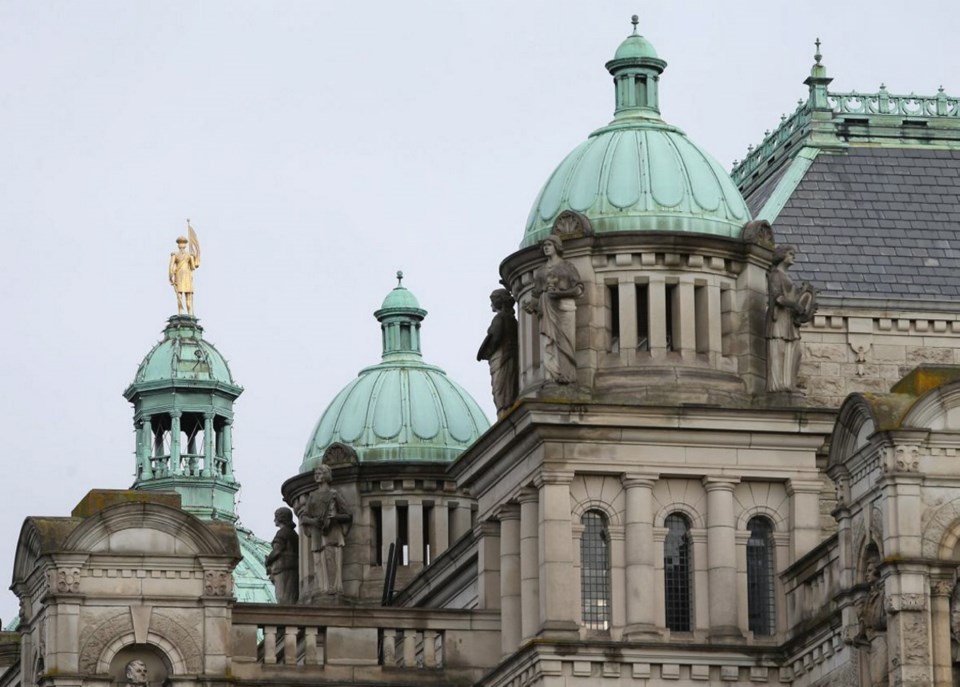 Drift. Paralysis. Inertia. It’s on display in various ways around the capital these days.
Drift. Paralysis. Inertia. It’s on display in various ways around the capital these days.
Governments are occupied with routine maintenance. They’re embarking — with mixed results — on a few new projects.
But there’s not much in the way of cutting-edge political advances these days.
Maybe horrible events elsewhere in the world are bleeding away attention.
Maybe it was the prolonged federal election campaign, which relegated B.C. politics to backwater status.
Maybe it’s the mid-term cycle that steals some of the initiative. All the big campaign ideas were pitched a year ago municipally, or two years ago provincially. Politicians are buckling down trying to accomplish goals, or coming to terms with the fact some goals won’t be met.
The McKenzie interchange designs provided some excitement this week. But they also provide a contrast with the Johnson Street Bridge debacle. The interchange is supposed to take two years to build. The bridge is now scheduled to take five years. They’re supposed to be finished in the same year, even though the bridge had a three-and-a-half-year head start.
Provincially, the fall session of the legislature quietly disintegrated Tuesday afternoon. Storm-lashed MLAs were all wondering on their way home: What was the point?
B.C. Liberals were roasted for skipping a fall session two years ago, with all sorts of indignant yelling about contempt for parliament and democracy. So they recalled the house last month, just because they felt obliged.
By the first week it was clear there was nothing to do. Liberals are marching in place until a federal decision on LNG permitting comes down. The main point of interest for the past five weeks has been establishing the breaking point on tolerance for tedium. MLA spent excruciating hours filling legislature time with talk, while having absolutely nothing to say.
A new benchmark for inanity was set early on. An entirely empty gesture — declaration of Red Tape Reduction Day — was enacted as a time-filler.
The house spent four hours debating a motion from the government supporting the idea of a dam that was approved almost a year ago and is already underway.
Days on end were spent debating electoral changes on which no one disagreed and could have been passed in a moment.
The NDP Opposition did a creditable job during question period probing the government’s approach to disclosure (delete, delete, delete).
But when it comes to establishing what they would do on major policy issues, they leave you in the dark.
NDP Leader John Horgan tried Tuesday to make a major mark in outlining his energy policy if they win the 2017 election.
It’s a mundane statement without a single cost figure in it, that borrows energy conservation ideas that have been in force for years. And it ignores the $9-billion concrete elephant in the room — the Site C dam getting underway on the Peace River. It’s the biggest power project in Canadian history and it isn’t even mentioned.
Only during questioning did Horgan oppose the dam and say they might abandon it half-built if they win in 2017. He didn’t commit to that, but he explicitly didn’t rule it out.
Retro-fitting public buildings is an elementary-level energy conservation measure, not the dramatic new alternative the NDP seems to think it is. And even allowing the slightest possibility that they’d mothball billions of dollars worth of work and kill thousands of jobs is baffling.
On the civic side, it’s been a year since people voted in a confusing series of plebiscites in favour of looking at more efficient local government.
Community Minister Peter Fassbender’s appearance Tuesday made it pretty clear that’s not going anywhere. Speaking to a business luncheon, he recounted his experience opposing amalgamation in Langley and said the arguments then were more about emotions than substance.
He’s standing ready to help “facilitate” whatever comes out of a summit meeting with the 13 mayors next month.
But first they have to agree on something. Don’t hold your breath.
Amalgamation talk started with a volunteer group, but it needs an elected ramrod who’s ready to fully commit. Don’t look to cabinet for any such leadership. And don’t expect any of the baker’s dozen mayors to step up.



